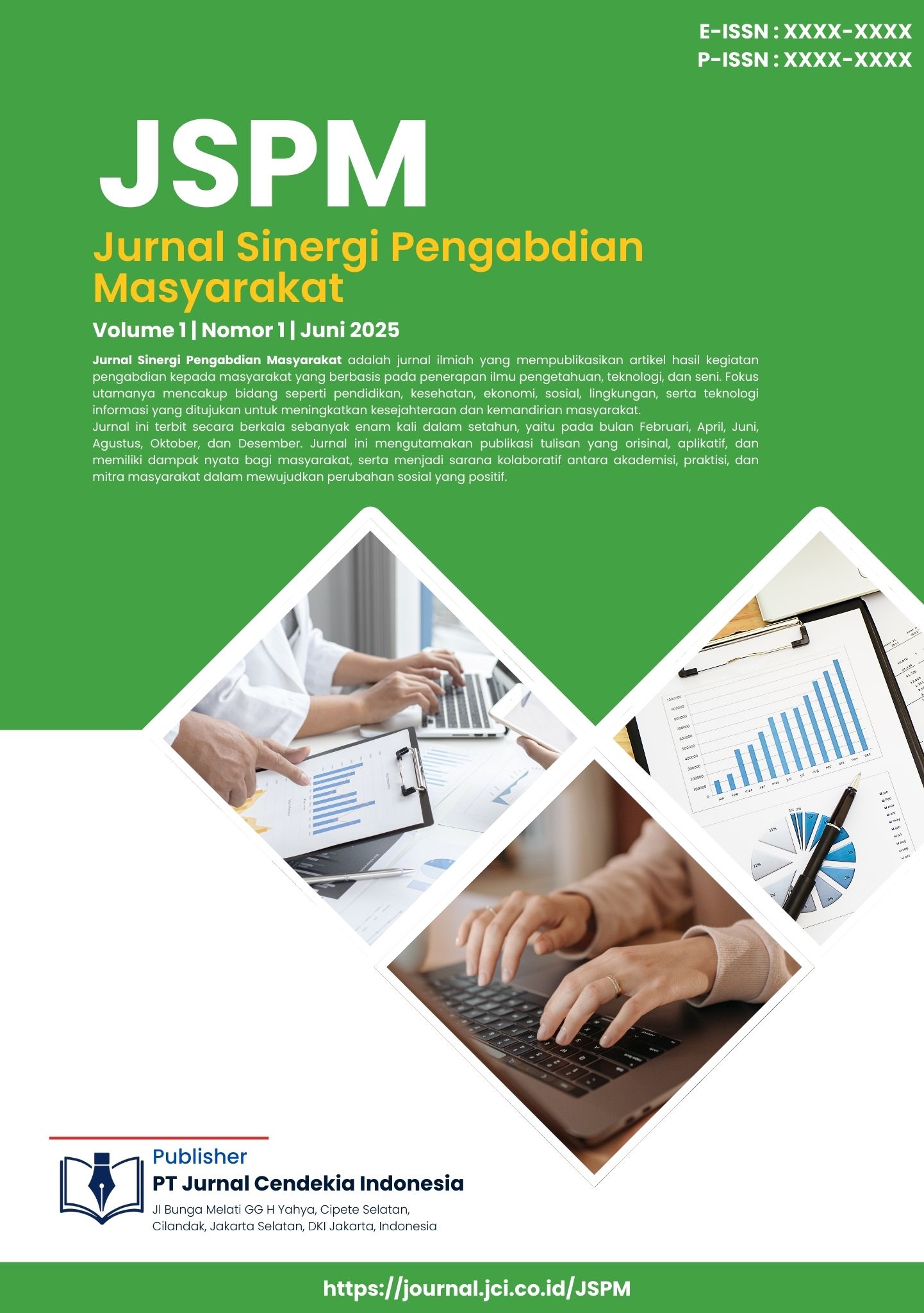Hidden Threats: Virus Risks in Whatsapp Images and Self-Protection Efforts
Keywords:
WhatsApp, Steganography, Image Virus, Cyber Security, User ProtectionAbstract
WhatsAppis one of the most widely used messaging applications because of its ease and speed in exchanging information, including image files. However, behind this convenience, there is a hidden threat in the form of malware insertion through image files. Cybercriminals often use steganography techniques to embed malicious code in images without changing their visual appearance. When the image is downloaded and opened, malware can be activated and attack the user's device. This article discusses the potential dangers of images on WhatsApp, virusinsertion techniques, and protection strategies that can be carried out. The methods used are literature studies and analysis of real incidents, such as the case of the spread of Pegasus spyware. The findings show that low user awareness, automatic download habits, and the use of unofficial applications increase the risk. As a protective measure, users are advised to disable the automatic download feature, routinely update applications, use antivirus, and be careful with files from unknown sources. This article also emphasizes the importance of increasing digital security literacy and innovation in the development of automatic detection features on communication platforms. With a better understanding, users can take preventive steps against cyber attacks that are disguised through visual media.
References
Andress, J. (2021). Cybersecurity: The beginner’s guide. Packt Publishing.
Casey, E. (2019). Digital evidence and computer crime: Forensic science, computers and the Internet (3rd ed.). Academic Press.
Chai, C. A. (2023). Peningkatan kesadaran keamanan digital melalui literasi siber di masyarakat perkotaan. Jurnal Keamanan Informasi dan Teknologi, 9(2), 87–95.
Gasser, U., Maclay, C., & Palfrey, J. (2010). Working towards a deeper understanding of digital safety for children and young people in developing nations. Berkman Center Research Publication.
Hakim, A. R., & Sutrisno, E. (2021). Ancaman malware pada media sosial dan upaya pencegahannya. Jurnal Teknologi Informasi dan Komunikasi, 12(1), 45–53.
Kaspersky. (2023). Malware in image files: How hackers hide viruses in photos. Retrieved from https://www.kaspersky.com
Krutz, R. L., & Vines, R. D. (2010). Cloud security: A comprehensive guide to secure cloud computing. Wiley.
McFedries, P. (2022). Protecting your privacy online. Que Publishing.
Oktaviani, T., & Prasetyo, R. (2022). Pentingnya literasi digital dalam menghadapi ancaman siber di era komunikasi digital. Jurnal Komunikasi Digital Indonesia, 4(3), 112–121.
Pavur, J. (2020). Image-based malware attacks on WhatsApp: Mechanisms and mitigations. Proceedings of the International Conference on Cybersecurity and Privacy.
Putri, Y. D., & Nugroho, B. (2020). Perlindungan data pribadi di era digital: Studi kasus WhatsApp. Jurnal Hukum dan Teknologi, 5(2), 73–80.
Quinn, M. J. (2020). Ethics for the information age (8th ed.). Pearson.
Rouse, M. (2022). Image steganography and malware infiltration. SearchSecurity by TechTarget. Retrieved from https://www.techtarget.com/searchsecurity
Schneier, B. (2020). Secrets and lies: Digital security in a networked world (2nd ed.). Wiley.
Sharma, A., & Grover, S. (2019). Cyber hygiene awareness and practices among mobile app users. International Journal of Cyber Security and Digital Forensics, 8(1), 34–40.
Sobari, A. (2021). WhatsApp sebagai media komunikasi dan potensi ancaman siber. Jurnal Sistem Informasi, 9(2), 56–65.
Stiawan, D., Idris, M. Y. I., & Abdullah, J. (Eds.). (2018). Recent advances in intrusion detection systems for cybersecurity. Springer.
Syahrir, D., & Fauzi, M. (2022). Strategi pencegahan malware berbasis sosial media di kalangan remaja. Jurnal Ilmu Komputer dan Teknologi Informasi, 15(3), 101–108.
Symantec. (2023). Cyber threat report: Malware trends and defenses. NortonLifeLock.
Widodo, H., & Pramudito, R. (2021). Pengaruh literasi digital terhadap kesadaran keamanan data pribadi. Jurnal Literasi Digital Indonesia, 3(2), 88–97.
Downloads
Published
Issue
Section
License
Copyright (c) 2025 Gilang Rama Permana, Shadam Jodian Saputra, Naufal Imam Hilmy, Lutfi Nur Wahid, Florida Virginia Luan, Sopian Noer Mohamad (Author)

This work is licensed under a Creative Commons Attribution 4.0 International License.
License: Creative Commons Attribution 4.0 International (CC BY 4.0).















 This work is licensed under a
This work is licensed under a 